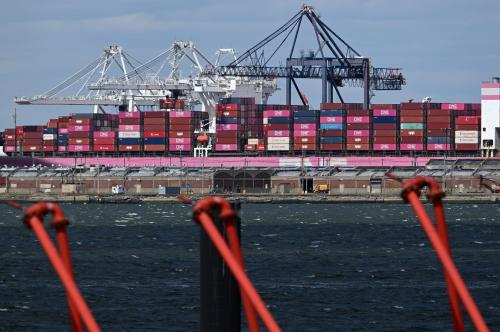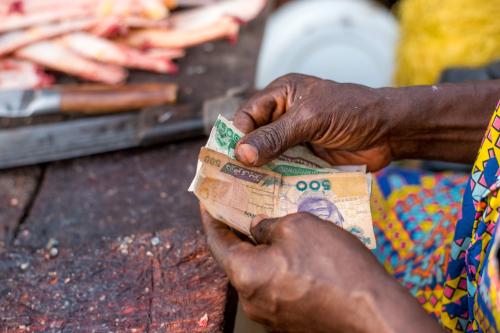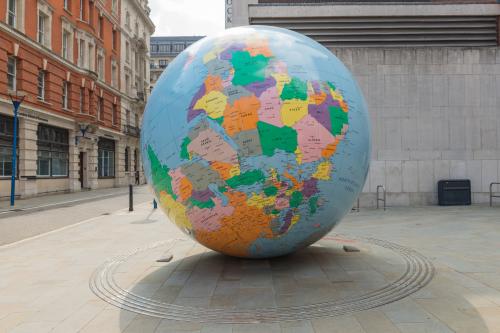You have been invited to a high profile, high society wedding. But you become aware, by talking to other invitees in advance, that you have only been invited to the Sunday brunch. Others have been invited to the rehearsal dinner on Friday night, and to the wedding and the reception the next day, as well as to the Sunday brunch. But you are invited to join the festivities after the main events are over and only for the finishing flourish.
The G8 Summit in Hokkaido to take place over three days from mid-day Monday July 7 to after lunch on Wednesday July 9 parallels the three-day wedding party. The lunch and the afternoon of the first day will focus on development and specifically Africa, with leaders of seven large African nations and the head of the African Union Commission in attendance with the heads of the G8 governments.
The second day is the core meeting of the G8 leaders together for the full day, without others, to discuss a variety of pressing international issues such as the world economy, environment and climate change, nuclear non-proliferation and peace-building. This is the small wedding party of immediate family for the main event. Europe, North America, Japan and Russia have the global stage to themselves.
On the third day, leaders from the “Outreach Five,” Brazil, China, India, Mexico, and South Africa, will meet with G8 heads for a few hours in the “early morning.” There will be a brief break for photos followed by another meeting of several hours in the late morning of the G8 Plus Outreach Five leaders plus Australia, Indonesia and Korea. These 16 countries constitute the group of “major emitter countries” whose combined output of green house gases account for some 85 percent of world emissions. They will try to discuss key issues in the development of a post-Kyoto framework for global climate change which would be put into force in 2012.
What kind of a party is this? It is an old fashioned party, with the traditions and trappings of the power of the past overshadowing the potential and promise of the future. Without the four Asian giants—China, India, Indonesia, and Korea— and without the new energy power and carbon sink—Brazil—and others, such as Mexico and South Africa, who have been part of the “Outreach Five” since the 2005 G8 summit, there is very little prospect of progress on a post-Kyoto climate change framework. Or on any other major global issue on the agenda.
So where do we go from here? If this is an outdated way to run a summit, what makes more sense?
A survey of more than six dozen officials and experts involved in international reform from 16 countries this winter reveals some clear directions for the future. The vast majority of the respondents think the world needs a global steering mechanism, but only a small minority think that the G8 is performing that role, that the G8 is an effective mechanism for international cooperation and that the country composition of the G8 is legitimate. But that does not necessarily mean that the G8 is finished. A strong majority regard the G8 summits as “the pivotal club” for Western / like-minded countries and think that the G8 is indeed performing that role.
Almost all of the respondents think that the recent evolution of the G8 to include the “Outreach Five” since 2005 is “important”, “positive”, and “necessary” but only a quarter of them think this evolution is “adequate”. Here is the clincher. An overwhelming majority of all respondents favor changes in the leaders level summit beyond thirteen, to a group of around 16 but not more than 20, and favor a stronger mandate and clearer mission for an expanded summit group that would “take on the broad, evolving agenda of global challenges and provide strategic guidance to the international institutions on how to address them”.
Rather than reforming the G8, the pathway forward seems to be to preserve the G8 as a caucus of the advanced industrial countries and to form a new expanded and reformed summit grouping that would include roughly equal numbers of advanced industrial countries and of major emerging market economies to address global challenges. This would bring leaders from the new powers together with leaders of the old industrial powers on an equal footing as partners to provide strategic guidance to the international system of institutions and to the international community on future directions and goals.
The days of the G8 trying to deal with global issues without the global majority present and of the West treating the Rest as secondary players would give way to a more inclusive, representative grouping that could be more legitimate and more effective at the same time.
The Brookings Institution is committed to quality, independence, and impact.
We are supported by a diverse array of funders. In line with our values and policies, each Brookings publication represents the sole views of its author(s).



Commentary
Op-edLate to the Party: When Will the G8 Bring in the Heavy Hitters?
July 7, 2008